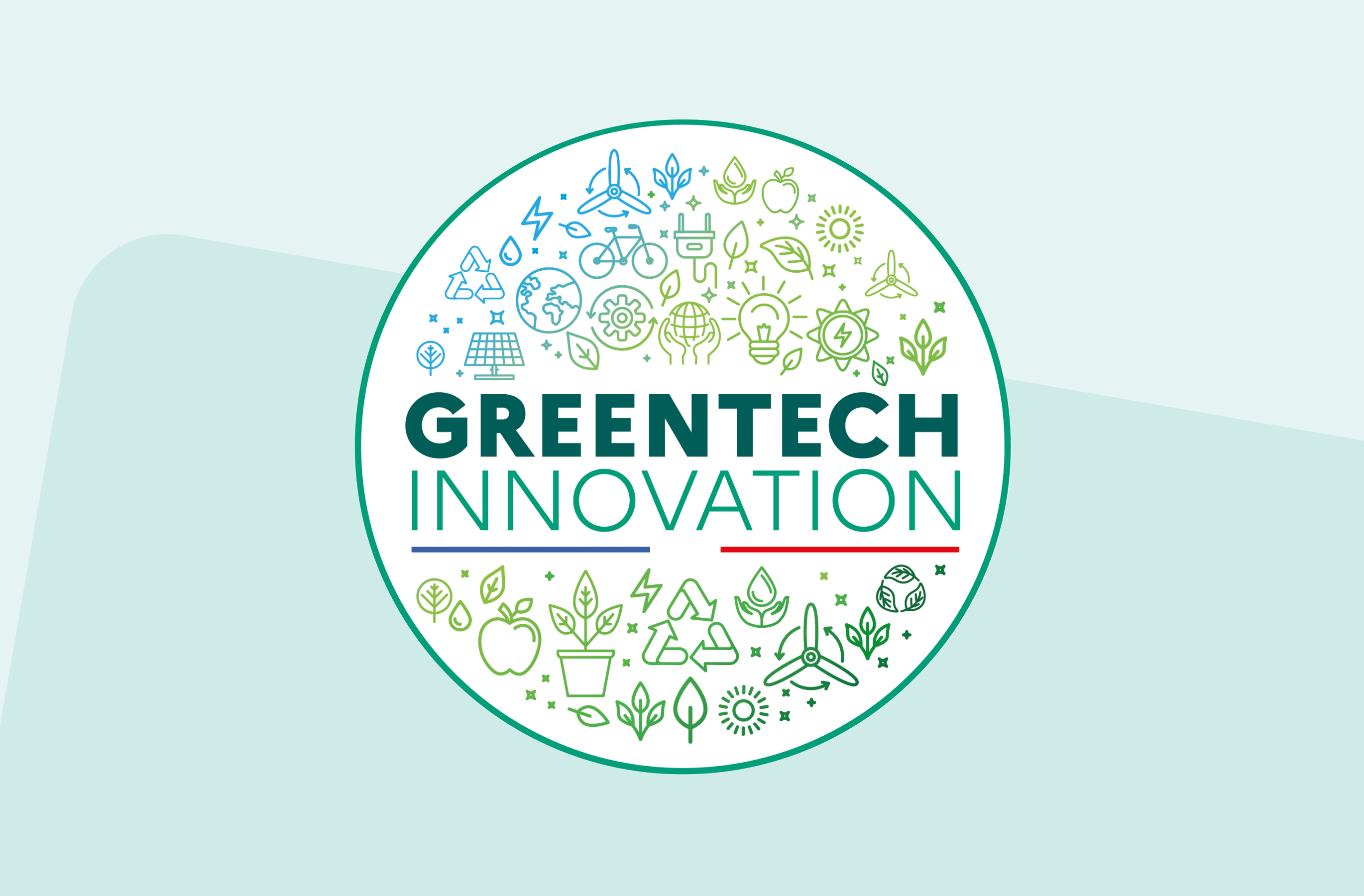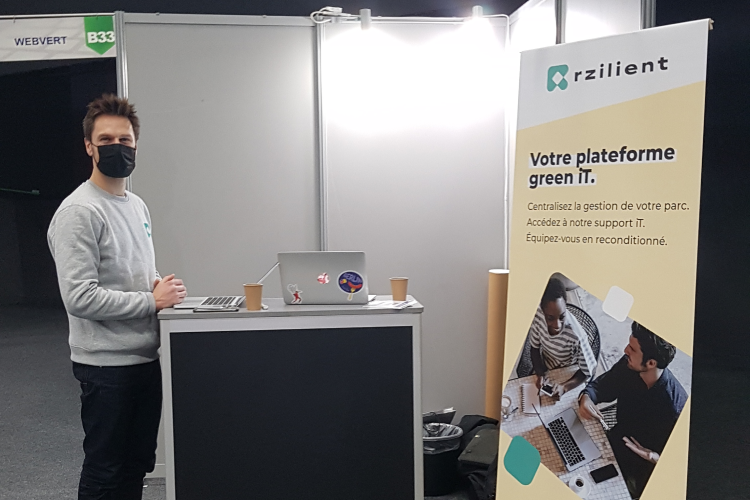La compensation carbone : fausse bonne idée

Découvrez notre solution tout-en-un
L’été 2021 a été particulièrement marqué par les incendies monstrueux, conséquences du réchauffement climatique. Ces phénomènes posent la question de la pertinence des arbres plantés dans le cadre de compensations carbone.
Ces forêts brûlent à cause du réchauffement climatique alors qu’elles devaient justement capturer le dioxyde de carbone émis par l’activité humaine. Ironique non ? C’est en tout cas ce qu’en pense Greta Thunberg dans un tweet sur la question.
Qu’est-ce que la compensation carbone ? Réelle action d’engagement écologique ou simple greenwashing ? La neutralité voulue par la Cop21 de 2015 est-elle réellement possible ? Rzilient vous livre quelques réflexions sur le sujet.
La compensation carbone, qu’est-ce que c’est ?
Compenser son empreinte carbone veut avant tout dire que l’on cherche à équilibrer un effet par un autre. Planter des arbres ou investir dans les projets d’énergies renouvelables se fait avec l’objectif de neutraliser un inconvénient.
Depuis les accords de Paris de 2015, nombreuses sont les entreprises qui déploient stratégies climats et politiques RSE pour répondre à l’objectif de rester sous la barre des +1,5° en devenant “neutre en carbone”.
En soi l’idée de compenser n’est pas mauvaise pour les émissions de CO2 inévitables - celles dites “incompressibles” - mais beaucoup d’entreprises compensent leurs émissions sans chercher à les réduire en premier.
Les 6 mythes de la compensation carbone
L’enjeu, aujourd’hui, est de changer les fondements du système. La compensation carbone et la “neutralité carbone” renforcent cette idée de soustraction et d’annulation de CO2 émis. Pour sortir de l’idée que la compensation carbone est le miracle à suivre pour lutter contre le réchauffement climatique, voici quelques mythes remis en question.
- Compenser ne réglera pas le problème du réchauffement climatique
Planter des arbres pour absorber ses émissions de CO2 lors d’un vol en avion, d’un achat quelconque ou autre action à fort impact ne résoudra pas la crise écologique actuelle.
C’est impossible d’arriver un jour à être complètement neutre en carbone ou à avoir 0 émission de CO2. Il reste toujours des émissions incompressibles. Et c’est normal.
Une tonne de CO2 émise ne peut pas simplement disparaître parce que l’on finance des projets à impact positif ou la plantation d’arbres. Les incendies de cet été en sont la preuve.
Prise comme unique solution pour lutter contre le réchauffement climatique, la compensation de son empreinte n’est pas assez forte. C’est un bon moyen pour commencer sa transition vers un modèle qui émet moins d’émissions, mais elle ne peut être l’unique outil d’une stratégie climat.
- La compensation carbone peut vite tourner au greenwashing
Continuer de prendre l’avion mais planter des arbres, ou continuer à extraire des matériaux rares tout en finançant des projets à impact positif semble antithétique. La compensation carbone ne peut être un moyen de se dédouaner de ses responsabilités face au changement climatique. Compenser n’annule pas les impacts négatifs.
Il ne s’agit pas de réduire ses émissions CO2 OU de les compenser. Ce n’est pas un choix mais bien une nécessité de construire une stratégie où les deux vont de pair.
L’ONU environnement va plus loin en disant qu’il faut faire attention à : “ l’illusion dangereuse d’un ‘correctif’ qui permettra à nos émissions énormes de continuer à croître.(...) Ce n’est pas une solution miracle et cela peut conduire à la complaisance.”
- La technologie pour éliminer le CO2 ne résoudra pas le problème
Imaginer que les technologies futures pourront capturer tout le CO2 émis est quelque peu trompeur. En plus de nécessiter de nombreuses ressources pour voir le jour (en eau, en énergie, en matériaux rares), ces dernières sont toujours en phase de recherches.
Même si certaines voient le jour, elles ne sont pas encore déployées à grande échelle. Et elles continuent de renforcer cette idée qu’il est possible de soustraire les émissions de CO2 de notre atmosphère alors que le plus efficace reste de les limiter à la source.
- Il faut continuer à planter de nouveaux arbres pour compenser la coupe de vieilles forêts
Les incendies de cet été l’ont démontré : les arbres plantés pour capturer le CO2 en ont relâché énormément quand ils ont brûlé. Si ces forêts brûlent alors qu’elles devaient compenser les émissions carbone des entreprises qui ont financé leur plantation, tout s’annule. Les tonnes de CO2 rejetés par les entreprises ne sont plus “capturées”, elles ont pollué plus qu’autre chose.
Les vieilles forêts sont à préserver pour plusieurs raisons :
- elles contiennent des siècles de carbone dans leur sol ;
- elles continuent de capter du carbone durant des centaines d’années ;
- lorsqu’on les coupe, le CO2 stocké est relâché.
Il vaut mieux éviter de détruire les forêts anciennes sous prétexte qu’on en plante de nouvelles car les jeunes arbres stockent bien moins de carbone que les plus anciens.
- Chaque tonne de CO2 n’est pas la même et ne peut être traitée de manière interchangeable.
Le dioxyde de carbone n’a pas de frontière. Qu’importe le pays d’où il a été émis, il se diffusera dans l’atmosphère et aura le même poids dans le réchauffement climatique. C’est la même chose pour les gaz à effet de serre (GES).
Pourtant, les émissions de carbone n’ont pas toutes la même valeur dans une stratégie de lutte contre le réchauffement climatique. Celles qui découlent de consommations dites de “luxe” n’ont pas le même poids que celles qui proviennent d’actions essentielles.
- Le climatiquement neutre est impossible.
Difficile de parler de neutralité carbone ou de produit (ou d’action) climatiquement neutre dans ces circonstances. Compenser toutes ses émissions de gaz à effet de serre ne veut pas dire qu’il y a une réduction de son empreinte carbone.
Avoir un bilan carbone de 0 est techniquement impossible. La compensation peut inciter à une consommation accrue puisqu’on se dédouane de sa responsabilité envers l’environnement. Il est trompeur d’utiliser des termes comme “neutralité” ou “neutre” puisque l’empreinte, même compensée, est loin d’être sans conséquence.
Pour éviter le greenwashing, parler de contribution carbone plutôt que de compensation
Comment faire pour avoir un réel impact dans la lutte contre le réchauffement climatique ? En plus de mesurer ses émissions et de chercher à les réduire, il est intéressant de faire ce que l’on appelle de la compensation carbone volontaire.
C’est une meilleure alternative à la compensation puisqu’elle concerne les émissions dites incompressibles et s’inscrit dans une démarche globale et engagée de réduction du bilan carbone.
La différence entre contribution et compensation
Utiliser le terme de contribution au lieu de compensation souligne plusieurs choses :
- on n’est pas dans une démarche de soustraction de CO2 ;
- on renforce l’idée que l’on est conscient que les initiatives financées n’annulent pas les émissions carbone ;
- cela s’inscrit dans une démarche où réduction des émissions et contribution s’imbriquent dans un vœu réellement engagé.
La contribution carbone volontaire met en avant l’idée que l’initiative est sincère, utile et fiable. Elle arrive à la fin du cheminement : éviter - réduire - compenser.
Selon l’INFCC (Info Compensation Carbone), pour contribuer volontairement, un financeur (entreprises, collectivités, particuliers) soutient un projet de réduction ou de séquestration des émissions de GES dont il n’est pas directement responsable.
En découlent des crédits carbone qui mesurent l’impact de ces projets. Chaque crédit représente une tonne équivalente de CO2 réduite ou enfermée.
Mais attention, ces crédits ne servent pas à :
- annuler l’impact d’une de ses actions ;
- racheter toute son empreinte carbone.
À l’origine ces crédits carbone ont été créés pour que les pays puissent limiter leurs émissions de GES dans le cadre du Protocole de Kyoto et donc tendre vers la neutralité carbone.
Chaque pays devait respecter des plafonds d’émissions imposés, et en cas de dépassement, équilibrer leurs émissions en finançant des projets bas carbone qui avaient lieu dans des pays où le Protocole de Kyoto ne prenait pas effet.
Aujourd’hui on se trouve dans un marché volontaire de la compensation carbone où chaque pays et entreprise peuvent acheter autant de crédits que nécessaire pour être “neutre en carbone”. D’où la nécessité de revoir le barème de calcul de la compensation pour basculer d’un système de “possession” des crédits à une “contribution” pour la réduction.
La Net Zero Initiative
La Net Zero Initiative, lancée en juin 2018 par Carbone 4, met en place un nouveau système de référentiel de contribution des organisations à la neutralité carbone.
L’enjeu ? Atteindre zéro émissions nettes mondiales grâce à l’alignement des acteurs sur les mêmes objectifs, concepts et méthodes.
Pour contribuer à la neutralité carbone mondiale de manière efficace, le référentiel se base sur 5 principes clés :
- les termes “neutralité carbone” ne peuvent s’appliquer à une organisation car ils désignent l’objectif mondial d’équilibrage ;
- les organisations peuvent uniquement contribuer à cette trajectoire ;
- les réductions d’émissions et les émissions négatives (celles qui sont “absorbées” par la compensation) sont comptées séparément ;
- la finance carbone ne peut “annuler” les émissions opérationnelles d’une entreprise, seulement créer des émissions évitées ou négatives ;
- la conception de “contribution à la neutralité planétaire” concerne également les produits et les services bas carbone. Les émissions évitées sont séparées en deux : celles qui correspondent à une réelle baisse absolue du niveau d’émissions, et celles qui sont une “moindre augmentation” par rapport à la situation de base.
Cette nouvelle manière de comptabiliser les contributions carbone renforce le fait que pour faire baisser les émissions mondiales, il faut agir de 3 manières :
- réduire ses propres émissions directes et indirectes ;
- réduire les émissions des autres
- augmenter les puits carbone.
Il ne s’agit pas de choisir entre les 3 mais de mener l’ensemble de front.
L’ambition de Rzilient dans le secteur du numérique
On le sait, l’empreinte carbone du numérique est conséquente. Et la tendance n’est pas à la baisse pour ces prochaines années.
Au lieu de planter des arbres pour compenser les émissions liées au numérique, Rzilient fait le choix d’avoir une vision plus globale pour un secteur conscient et responsable, grâce à l’économie circulaire.
Mais cette ambition va plus loin. L’enjeu de Rzilient, est de jouer un vrai rôle d’accompagnement des structures dans la réduction de leur empreinte environnementale allouée à leurs équipements numériques.
Rzilient cherche aussi à :
- promouvoir un numérique à impact positif ;
- mettre des pratiques responsables et circulaires au centre des démarches numériques des entreprises ;
- sensibiliser sur ces questions du numérique responsable.
Et lorsque l’on a réduit au maximum ses émissions GES, Rzilient propose, avec son partenaire PUR Projet de faire de la contribution volontaire pour compenser les émissions incompressibles.
Vous cherchez à lutter efficacement contre le réchauffement climatique et à intégrer un numérique responsable au sein de votre entreprise ? Parlons-en !






